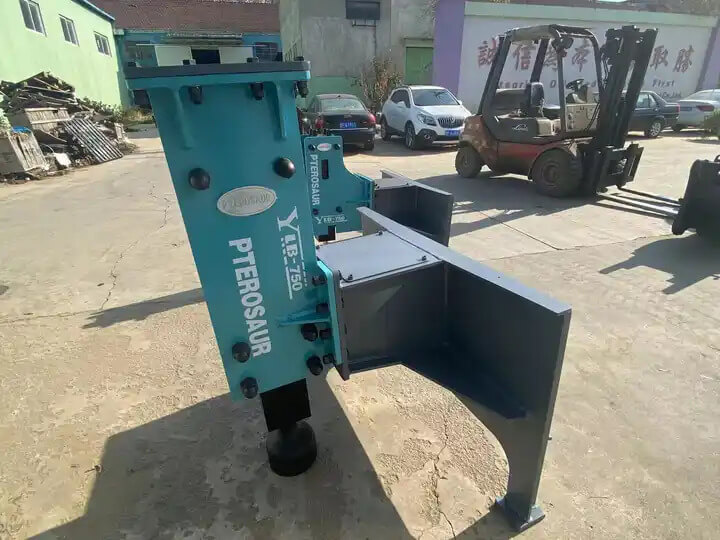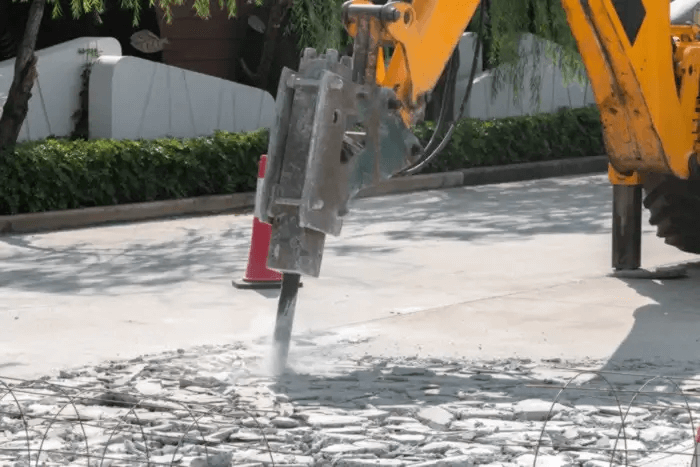Understanding Hydraulic Rock Breakers: Common Failures and Troubleshooting
Hydraulic rock breakers, also known as hydraulic hammers, are powerful tools essential for construction and demolition work, capable of breaking through tough materials with ease. However, like any machinery, they can experience failures that hinder their performance. This article delves into six common causes of hydraulic rock breaker failure and offers troubleshooting tips to ensure their longevity and efficiency.
Common Failure Causes
-
Insufficient Oil Pressure: One of the most prevalent issues is inadequate oil pressure flowing to the hydraulic breaker. This can stem from damaged hoses or pipes, leading to reduced performance. Operators should regularly inspect hydraulic lines for leaks or blockages.
-
Excessive Nitrogen Pressure: The hydraulic breaker relies on nitrogen pressure to operate effectively. If the nitrogen pressure is too high, it can impede the movement of the piston, causing the hammer to fail to strike. Regular checks of the nitrogen pressure are essential for optimal operation.
-
Worn Couplers: Over time, couplers can wear out, leading to ineffective power transmission. It is crucial to examine these components frequently and replace them as needed to maintain the breaker’s performance.
-
Heat Build-Up: Excessive heat during operation can diminish the breaker’s efficiency. If the hydraulic breaker becomes too hot, operators should investigate the cause, which may include insufficient oil flow or contamination within the hydraulic system.
-
Contaminated Hydraulic Fluid: Hydraulic fluid must remain clean to prevent damage to the system. Contaminants can lead to seal failures or reduced lubrication, resulting in operational issues. Regularly changing the hydraulic fluid and using filters can mitigate this problem.
-
Brazing Rods and Seals: Loose brazing rods or broken hydraulic seals can lead to significant failures in a hydraulic breaker. These components should be inspected and maintained to ensure proper functioning.
Troubleshooting Tips
To address and resolve common issues with hydraulic breakers, operators can follow these troubleshooting guidelines:
-
Check Oil Levels: Ensure the hydraulic breaker has sufficient oil. Low oil levels can lead to soft hits or slow operation.
-
Monitor Nitrogen Levels: Regularly check and adjust nitrogen pressure to avoid performance issues related to excessive or insufficient pressure.
-
Inspect for Leaks: Look for signs of oil leaks in hoses and connections. Damaged components should be repaired or replaced promptly.
-
Evaluate Heat Levels: If overheating occurs, allow the breaker to cool down and investigate the hydraulic system for potential blockages or fluid contamination.
-
Follow Maintenance Protocols: Adhere to the operational guidelines specified in the user manual, including regular maintenance checks and timely fluid changes.
-
Seek Professional Help: If problems persist after troubleshooting, consult with a hydraulic breaker manufacturer or a qualified technician for specialized assistance.
Conclusion
Hydraulic rock breakers are indispensable tools in the construction industry, but they require proper care and troubleshooting to function effectively. By understanding the common causes of failure and implementing best practices for maintenance and operation, users can ensure their hydraulic breakers remain reliable and perform at their best. Regular inspections, prompt repairs, and adherence to operational guidelines will go a long way in extending the life of these powerful machines.




































